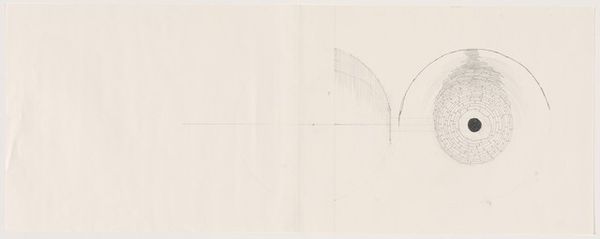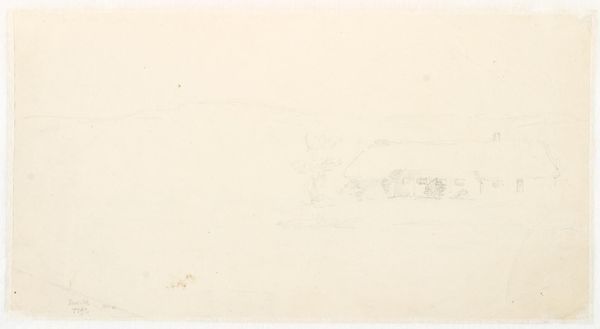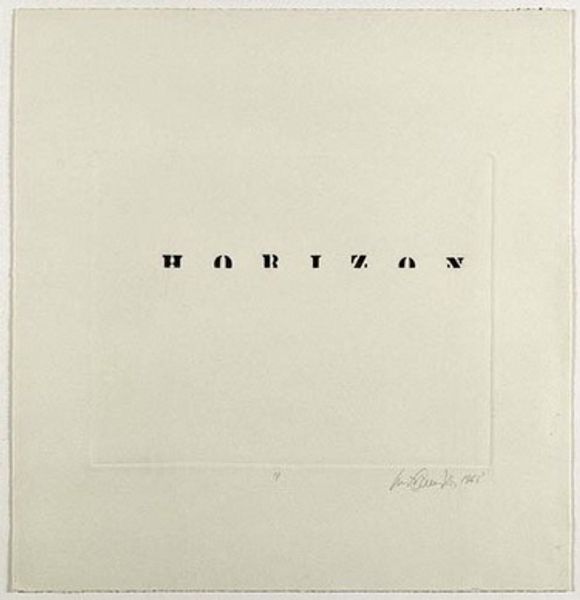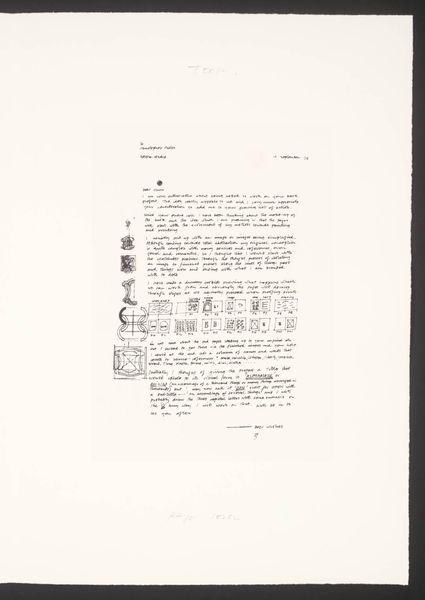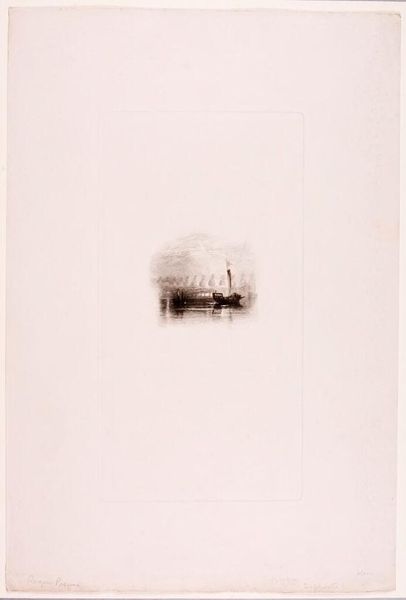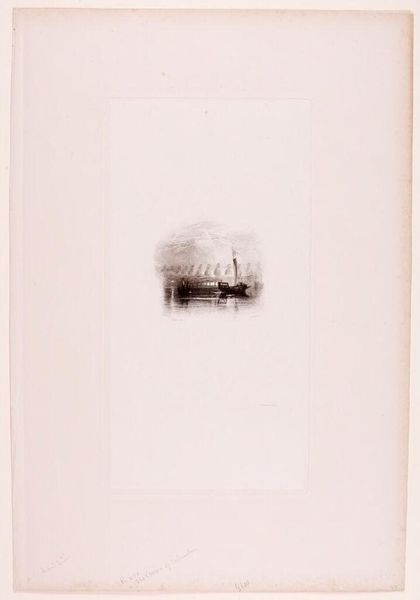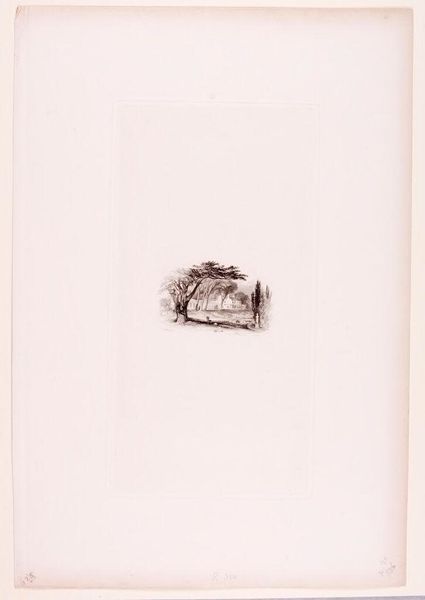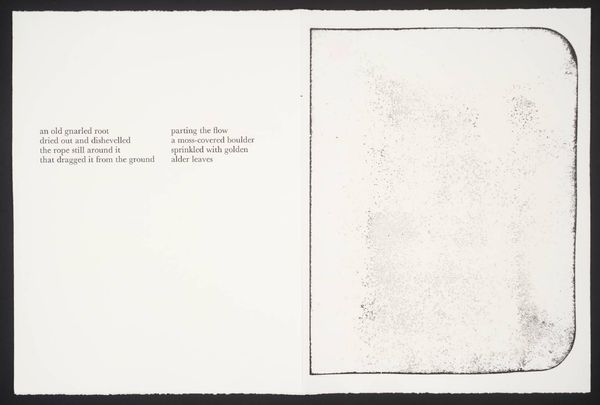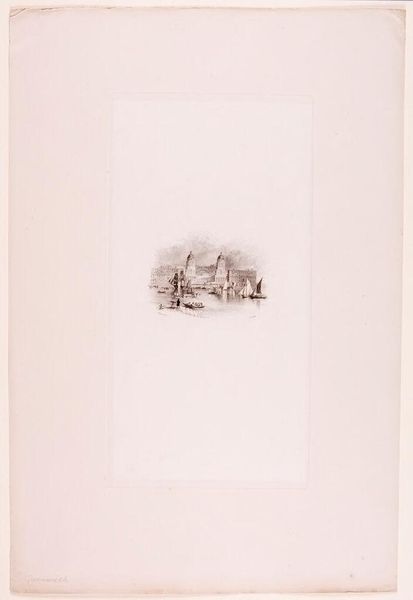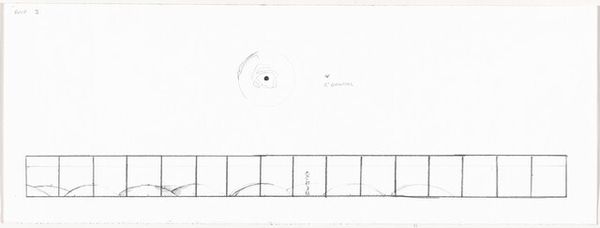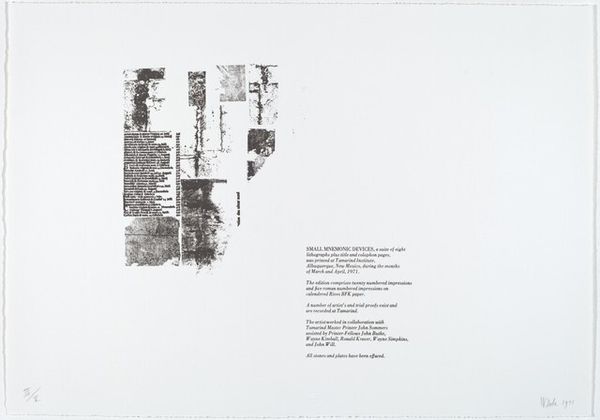
drawing, graphic-art, print, paper, ink
#
drawing
#
graphic-art
#
conceptual-art
# print
#
paper
#
ink
#
black-mountain-college
#
line
#
monochrome
Copyright: John Cage,Fair Use
Curator: John Cage's "Haiku" presents us with a curious example of his graphic work— a sparse composition realized with ink on paper. What springs to mind when you first look at this piece? Editor: An echoing silence. All that empty space around those musical notations feels so pregnant with potential sound. It makes me want to hold my breath and listen. Curator: Considering Cage's exploration of silence and chance, that response feels remarkably appropriate. The means of production here, ink and paper, combined with traditional music notation, serve as both a familiar framework and a springboard for the unexpected. Editor: It's as though he's deconstructing the whole idea of music, pulling it apart into these tiny, almost fragile components. Like examining the bones of a bird. And, maybe he's asking us to consider the paper itself as a kind of stage for an ephemeral performance. Curator: Precisely. The physical properties of the paper, its texture, its weight, the way the ink interacts with it, all contribute to the overall impact. He seems to question the relationship between notation, performance, and, ultimately, the consumer experience of music as a commodity. Editor: Commodity is a stiff word to use here... but the more I contemplate, the more the work breathes. Like a tiny universe compressed into this single line. It might almost float off into infinity. Curator: Its minimal aesthetic emphasizes the artistic act itself – the careful and, perhaps, random arrangement of symbols on a manufactured surface. The value resides not in any potential melodic output but in the material's deliberate, considered placement. Editor: I find that I disagree... while there may be random element, there are also structure and constraint in his process, so the material choices speak volumes beyond pure intentionality, at least, they certainly do so to my eye. Curator: Indeed. And by drawing attention to the material reality of both the artistic process and its reception, Cage subverts the conventional hierarchy separating high art from craft and challenges established notions of artistic value and labor. Editor: The experience of viewing “Haiku,” feels like glimpsing an intricate, interior landscape where sounds flicker. Something hidden, perhaps. Curator: An insight perfectly aligned with Cage's larger artistic project of encouraging us to listen to, and to really notice, everything that exists beyond the imposed structures. Editor: Absolutely. I'll definitely be taking more moments to simply listen going forward.
Comments
No comments
Be the first to comment and join the conversation on the ultimate creative platform.
